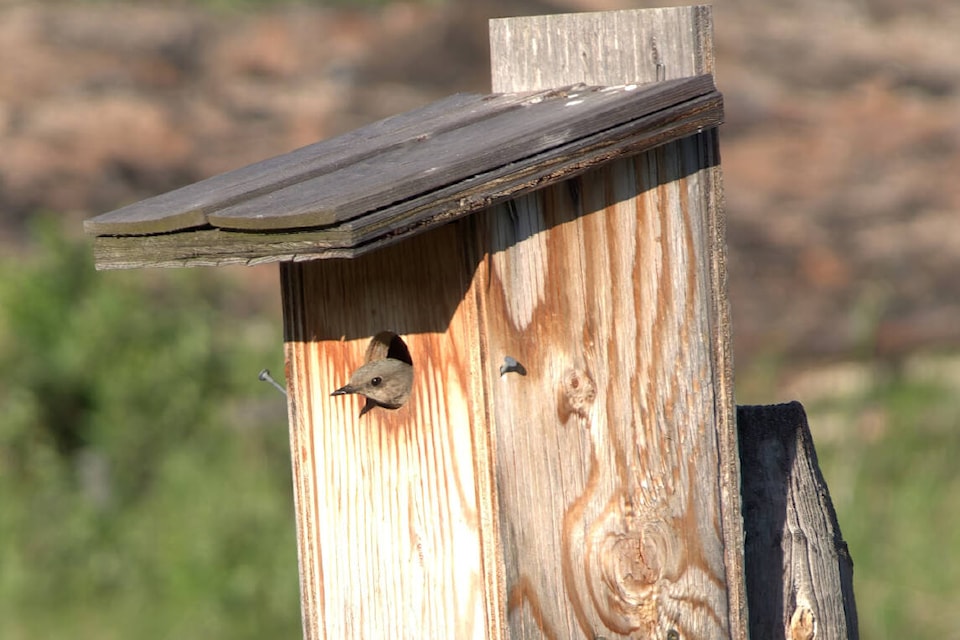Loyd Csizmadia
Bluebird Route Coordinator, Williams Lake Field Naturalists
What is the most universally recognized symbol of happiness? The bluebird, of course.
Here in the Cariboo-Chilcotin, it is the mountain bluebird (Sialia currucoides). Even though the ground may still be covered in snow and the diurnal temperature may teeter between freezing and thawing, the male mountain bluebird will appear around mid-March, indicating that spring is just around the corner. For those who worry that there are very few insects for these early birds to eat, you will be glad to know that the mountain bluebird can survive on seeds and berries. Has anyone had the pleasure of sighting one as of yet? If so, I’ll wager that you felt happy!
March and April are good times to observe the courtship rituals of mountain bluebirds. If you don’t mind rising before the break of dawn, the male might reward you with a warbling Robin-like song as he marks his territory and advertises his whereabouts to any nearby females. According to Myrna Pearman in her Mountain Bluebird Trail Monitoring Guide (1992), male song has the greatest attraction to first-year nesters, whereas females who have nested before often return to familiar boxes regardless of which male controls the territory . This raises a question: Do second year females require courting? Perhaps the ritual is reduced, since the female already knows where she will nest.
During courtship, the male will accompany the female to various cavities on his patch. Sometimes he will carry a bit of nesting material and drop it enroute, or he will mime that he is. He will also fly between a perch and a potential nest site, vocalizing his intentions while performing various aerial displays such as wing-waves and tail spreads. Preening and feeding the female is also part of the ritual, as is repeatedly entering and leaving each potential nest site. Eventually, the female will select the location.
According to the Birdhouses 101 website, “It isn’t until both birds go inside one nesting cavity several times…that they are considered to be paired.” Once the female selects a cavity, she alone builds the nest. Guarding against cuckoldry, the male remains nearby, offering food, flight-displays, and vocalizations to the busy female. However, if a male becomes overzealous in his efforts, the female might behave aggressively towards him. The website also notes the birds copulate anytime during the nestbuilding process, and usually close to or on the nest box.
If you have bluebird nest boxes in your area, or know someone who does, it can be quite rewarding to pay an early visit. During the next month, there can be a lot to observe outside of the nest. Some sources say that our presence will not disturb these busy birds, but it is best to keep your distance.
Do you have any nest boxes in your yard? If so, try to remove the old nests in March. By mid-April—since mountain bluebirds may already be nesting— it is best not to clean the boxes. Always watch for freshly woven grass, which indicates a mountain bluebird is present, and for loose, clean, fluffy feathers, which suggest that a tree swallow is at work. These nests should be left alone, even if you don’t see any birds nearby.
Amateur birder Loyd Csizmadia currently coordinates the Mountain Bluebird Program on behalf of the Williams Lake Field Naturalists. If you would like to become a member of the Williams Lake Field Naturalists, contact Sue Hemphill at shemphill@xplornet.com or stop at the Scout Island Nature Centre or get a form from the web site: https://williamslakefieldnaturalists.ca/
